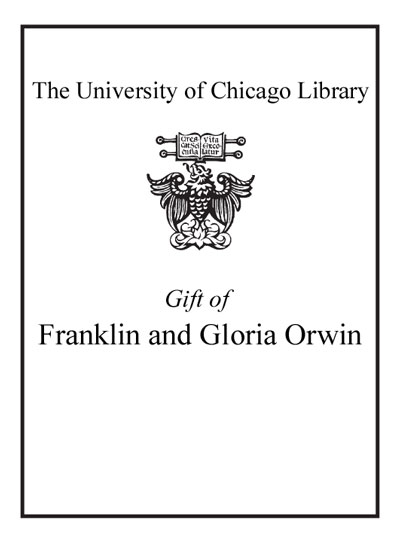Environmental economics & management : theory, policy, and applications /
Saved in:
| Author / Creator: | Callan, Scott. |
|---|---|
| Edition: | 4th ed. |
| Imprint: | Mason, OH : Thomson/South-Western, c2007. |
| Description: | xxv, 454 p. : ill. ; 27 cm. |
| Language: | English |
| Subject: | |
| Format: | Print Book |
| URL for this record: | http://pi.lib.uchicago.edu/1001/cat/bib/6205578 |
Table of Contents:
- Module 1. Modeling Environmental Problems
- Chapter 1. The Role of Economics in Environmental Management
- Economics and the Environment
- Fundamental Concepts in Environmental Economics
- Identifying Environmental Objectives
- Environmental Policy Planning: An Overview
- Conclusions
- Summary
- Review Questions
- Additional Readings
- Chapter 2. Modeling the Market Process: A Review of the Basics
- Market Models: The Fundamentals
- The Model of Supply and Demand: An Overview
- Market Demand
- Market Supply
- Market Equilibrium
- Economic Criteria of Efficiency
- Welfare Measures
- Conclusions
- Summary
- Review Questions
- Additional Readings
- Chapter 3. Modeling Market Failure
- Environmental Problems: A Market Failure
- Environmental Quality: A Public Good
- Modeling a Public Goods Market for Environmental Quality
- Environmental Problems: Externalities
- Modeling Environmental Damage as a Negative Externality
- The Absence of Property Rights
- Conclusions
- Summary
- Review Questions
- Additional Readings
- Module 2. Modeling Solutions to Environmental Problems
- Chapter 4. Conventional Solutions to Environmental Problems: The Command-and-Control Approach
- Use of Standards in Environmental Policy
- Are Environmental Standards Allocatively Efficient?
- General Approaches to Implementing Environmental Policy
- Is the Command-and-Control Approach Cost-Effective?
- Conclusions
- Summary
- Review Questions
- Additional Readings
- Chapter 5. Economic Solutions to Environmental Problems: The Market Approach
- Descriptive Overview
- Pollution Charges
- Environmental Subsidies
- Deposit/Refund Systems
- Pollution Permit Trading Systems
- Conclusions
- Summary
- Review Questions
- Additional Readings
- Module 3. Analytical Tools for Environmental Planning
- Chapter 6. Environmental Risk Analysis
- Concept of Risk
- Risk Assessment
- Risk Management
- Conclusions
- Summary
- Review Questions
- Additional Readings
- Chapter 7. Assessing Benefits for Environmental Decision Making
- Environmental Benefits: Conceptual Issues
- Approaches to Measuring Environmental Benefits: An Overview
- Estimation Under the Physical Linkage Approach
- Direct Estimation Methods Under the Behavioral Linkage Approach
- Indirect Estimation Methods Under the Behavioral Linkage Approach
- Conclusions
- Summary
- Review Questions
- Additional Readings
- Chapter 8. Assessing Costs for Environmental Decision Making
- Environmental Costs: Conceptual Issues
- Estimation Methods for Measuring Explicit Costs
- Cost Classifications in Practice
- Conclusions
- Summary
- Review Questions
- Additional Readings
- Chapter 9. Benefit-Cost Analysis in Environmental Decision Making
- Time Adjustments to Environmental Benefits and Costs
- The Final Analysis: Comparing Environmental Benefits and Costs
- Reservations About the Use of Benefit-Cost Analysis
- U.S. Government Support of Benefit-Cost Analysis
- Reducing Lead in Gasoline: A Real-World Example
- Conclusions
- Summary
- Review Questions
- Additional Readings
- Module 4. The Case of Air
- Chapter 10. Defining Air Quality: The Standard-Setting Process
- Overview of U.S. Air Quality Legislation
- Defining the Objectives of Air Quality Control
- Setting Standards to Define Air Quality
- Implementing the Standards
- Analysis of U.S. Air Quality Policy
- Benefit-Cost Analysis of the Clean Air Act
- Benefit-Cost Analysis of the Air Quality Standards
- Conclusions
- Summary
- Review Questions
- Additional Readings
- A Reference to Acronyms and Terms Used in Air Quality Control Policy
- Chapter 11. Improving Air Quality: Controlling Mobile Sources
- Urban Air Pollution: An Important Policy Motivation
- Controlling Mobile Sources
- Economic Analysis of Mobile Source Controls
- Conclusions
- Summary
- Review Questions
- Additional Readings
- A Reference to Acronyms and Terms Used in Mobile Source Control Policy
- Chapter 12. Improving Air Quality: Controlling Stationary Sources
- Acidic Deposition: An Important Policy Motivation
- Controlling Stationary Sources
- Economic Analysis of Stationary Source Controls
- Conclusions
- Summary
- Review Questions
- Additional Readings
- A Reference to Acronyms and Terms Used in Stationary Source Control Policy
- Chapter 13. Global Air Quality: Policies for Ozone Depletion and Global Warming
- The Problem of Ozone Depletion
- Controlling Ozone Depletion
- Economic Analysis of Ozone Depletion Policy
- The Problem of Greenhouse Gases and Global Warming
- Policy Response to Global Warming
- Economic Analysis of Global Warming Control Policies
- Conclusions
- Summary
- Review Questions
- Additional Readings
- A Reference to Acronyms and Terms in Global Air Quality Control Policy
- Module 5. The Case of Water
- Chapter 14. Defining Water Quality: The Standard-Setting Process
- Understanding Water Resources
- Overview of U.S. Water Quality Legislation
- Policy Objectives
- Setting Standards to Define Water Quality
- Analysis of Receiving Water Quality Standards
- Benefit-Cost Analysis of the Clean Water Act
- Conclusions
- Summary
- Review Questions
- Additional Readings
- A Reference to Acronyms and Terms in Water Quality Control Policy
- Chapter 15. Improving Water Quality: Controlling Point and Nonpoint Sources
- Controlling Point Sources
- Analysis of the Effluent Limitations
- The POTW Funding Program
- Analysis of the POTW Funding Program
- Controlling Nonpoint Sources
- Analysis of Nonpoint Source Controls
- Market-Based Solutions
- Watershed Management
- Conclusions
- Summary
- Review Questions
- Additional Readings
- A Reference to Acronyms and Terms in Water Quality Control Policy
- Chapter 16. Protecting Drinking Water: The Safe Drinking Water Act
- Overview of U.S. Drinking Water Legislation
- Setting Standards to Define Safe Drinking Water
- Economic Analysis of Safe Drinking Water Policy
- Economic Principles in Pricing Water Supplies
- Conclusions
- Summary
- Review Questions
- Additional Readings
- A Reference to Acronyms and Terms in Drinking Water Quality Control
- Module 6. The Case of Solid Wastes and Toxic Substances
- Chapter 17. Managing Hazardous Solid Waste and Waste Sites
- Characterizing the Hazardous Waste Problem
- Overview of U.S. Hazardous Waste Policy
- Controlling Hazardous Wastes: RCRA
- Analysis of U.S. Hazardous Waste Policy
- Overview of U.S. Hazardous Waste Site Policy
- Managing Uncontrolled Hazardous Waste Sites: Superfund
- An Analysis of Superfund
- Conclusions
- Summary
- Review Questions
- Additional Readings
- A Reference to Acronyms and Terms in Hazardous Waste Control Policy
- Chapter 18. Managing Municipal Solid Waste
- Characterizing Municipal Solid Waste
- The Policy Response: An Overview
- The Market for MSW Management Services
- Market Approaches to MSW Policy
- Conclusions
- Summary
- Review Questions
- Additional Readings
- A Reference to Acronyms and Terms in Municipal Solid Waste Policy
- Chapter 19. Controlling Pesticides and Toxic Chemicals
- Overview of U.S. Pesticide Controls
- Controlling Pesticide Use
- Analysis of FIFRA
- Overview of U.S. Legislation on Toxic Chemicals
- Controlling Chemical Use
- Analysis of TSCA
- Economic Analysis and Market-Based Policy
- Conclusions
- Summary
- Review Questions
- Additional Readings
- A Reference to Acronyms and Terms in Toxic Substances Policy Control
- Module 7. Global Environmental Management
- Chapter 20. Sustainable Development: International Trade and International Agreements
- Sustainable Development as a Global Objective
- Global Framework for Sustainable Development
- International Agreements to Control Transboundary Pollution
- International Trade and Environmental Protection
- Conclusions
- Summary
- Review Questions
- Additional Readings
- Chapter 21. Sustainable Approaches: Industrial Ecology and Pollution Prevention
- Industrial Ecology
- Pollution Prevention
- Strategic Initiatives and Programs
- Conclusions
- Summary
- Review Questions
- Additional Readings
- References
- Glossary
- Index


